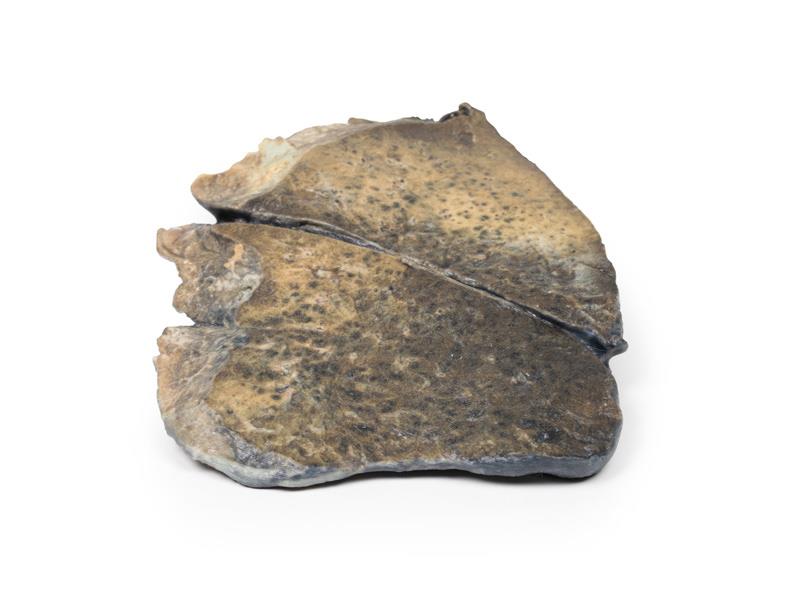Description
Clinical History
There is no clinical history for this specimen.
Pathology
The specimen is a parasagittal section of the left lung. There are patchy regions of focal consolidations and discolorations caused by congested and hyperaemic lung tissue distributed within both lobes; however, the upper lobe is more severely affected. The consolidation appears to be concentrated around the bronchioles, which are ectatic. The costal (pleural) surface of the upper lobe is especially discoloured.
Further Information
Bronchopneumonia is a form of pneumonia characterized by inflammatory exudate within the intra-alveolar space resulting in consolidation that affects a large and continuous area of the lobe of a lung. It is one of the two anatomic classifications of pneumonia (the other being lobar pneumonia). The affected regions in this case shows classical focal red hepatization or consolidation in focal regions, which is due to vascular congestion with extravasation of red cells into alveolar spaces, along with increased numbers of neutrophils and fibrin. The filling of airspaces by the exudate leads to a gross appearance of solidification, or consolidation, of the alveolar parenchyma.
Bronchopneumonia is a subtype of pneumonia. It is the acute inflammation of the bronchi, accompanied by inflamed patches in the peribronchial and peribronchiolar lobules of the lungs.
It is often contrasted with lobar pneumonia but in clinical practice the types are difficult to apply, as the patterns usually overlap. Bronchopneumonia (sometimes called lobular) often leads to lobar pneumonia as the infection progresses to affect an entire lobe. The same organism may cause one type of pneumonia in one patient, and another in a different patient. Causes
Bronchopneumonia is usually a bacterial pneumonia rather than being caused by viral disease and is more commonly a hospital-acquired pneumonia than a community-acquired pneumonia, in contrast to lobar pneumonia.



